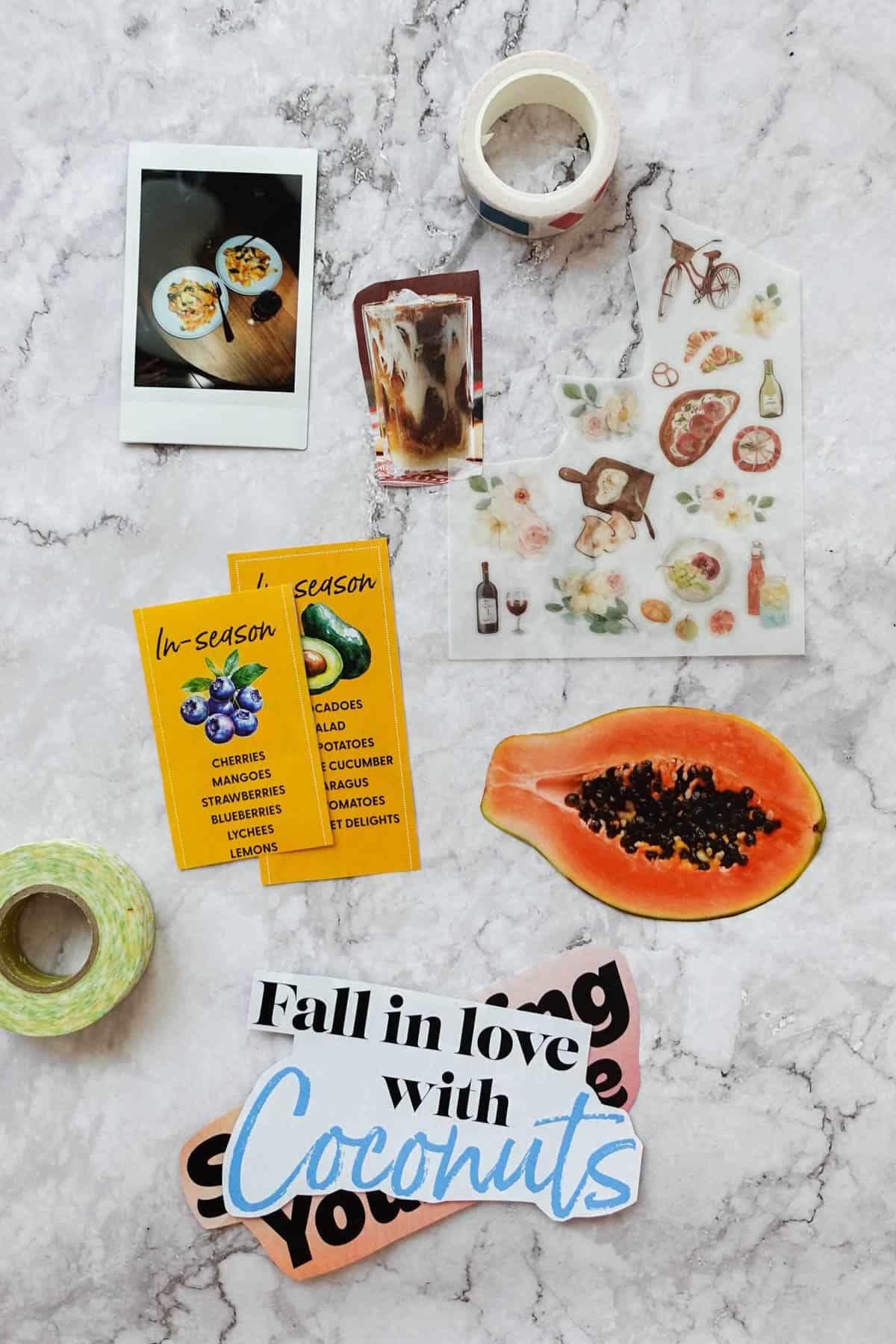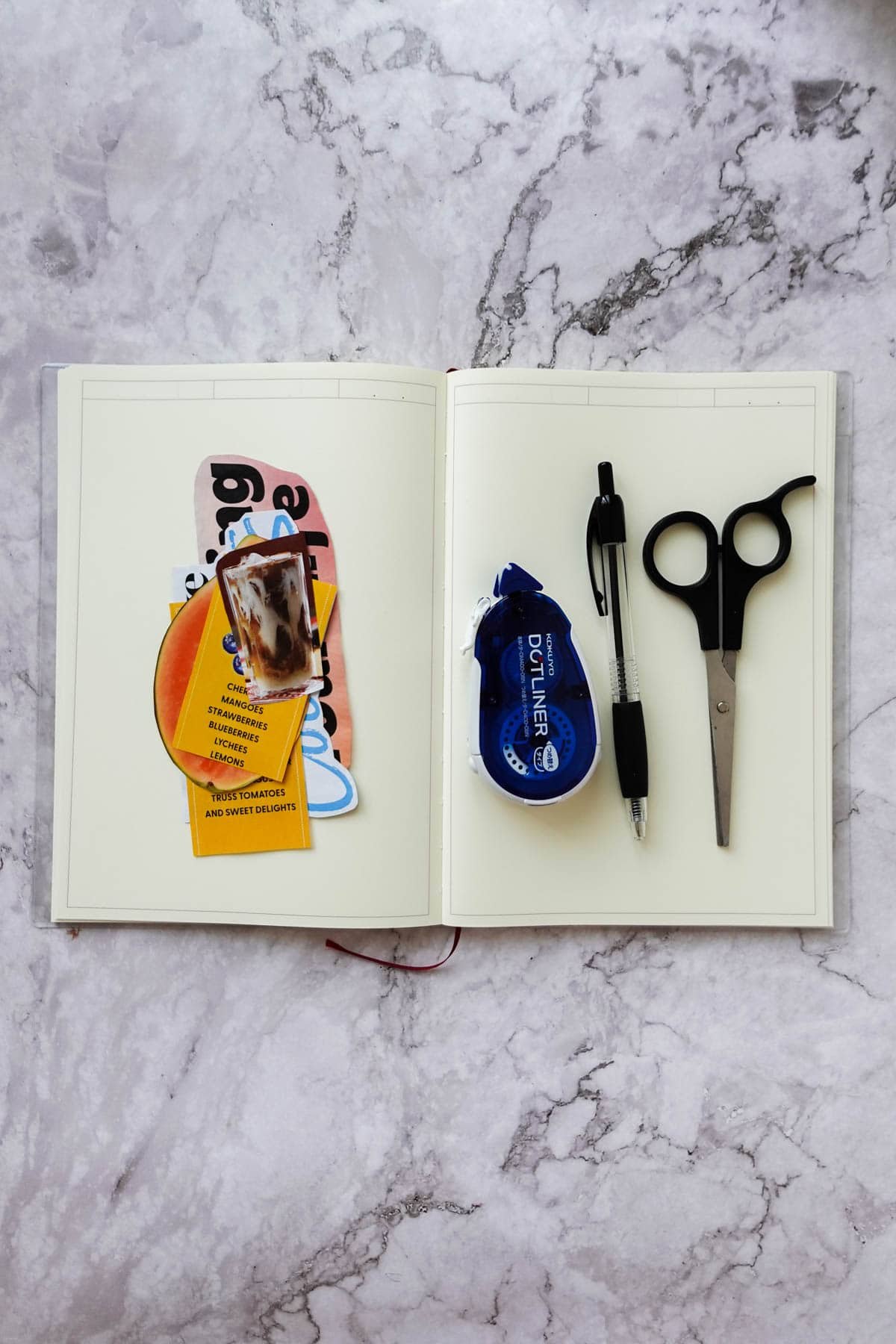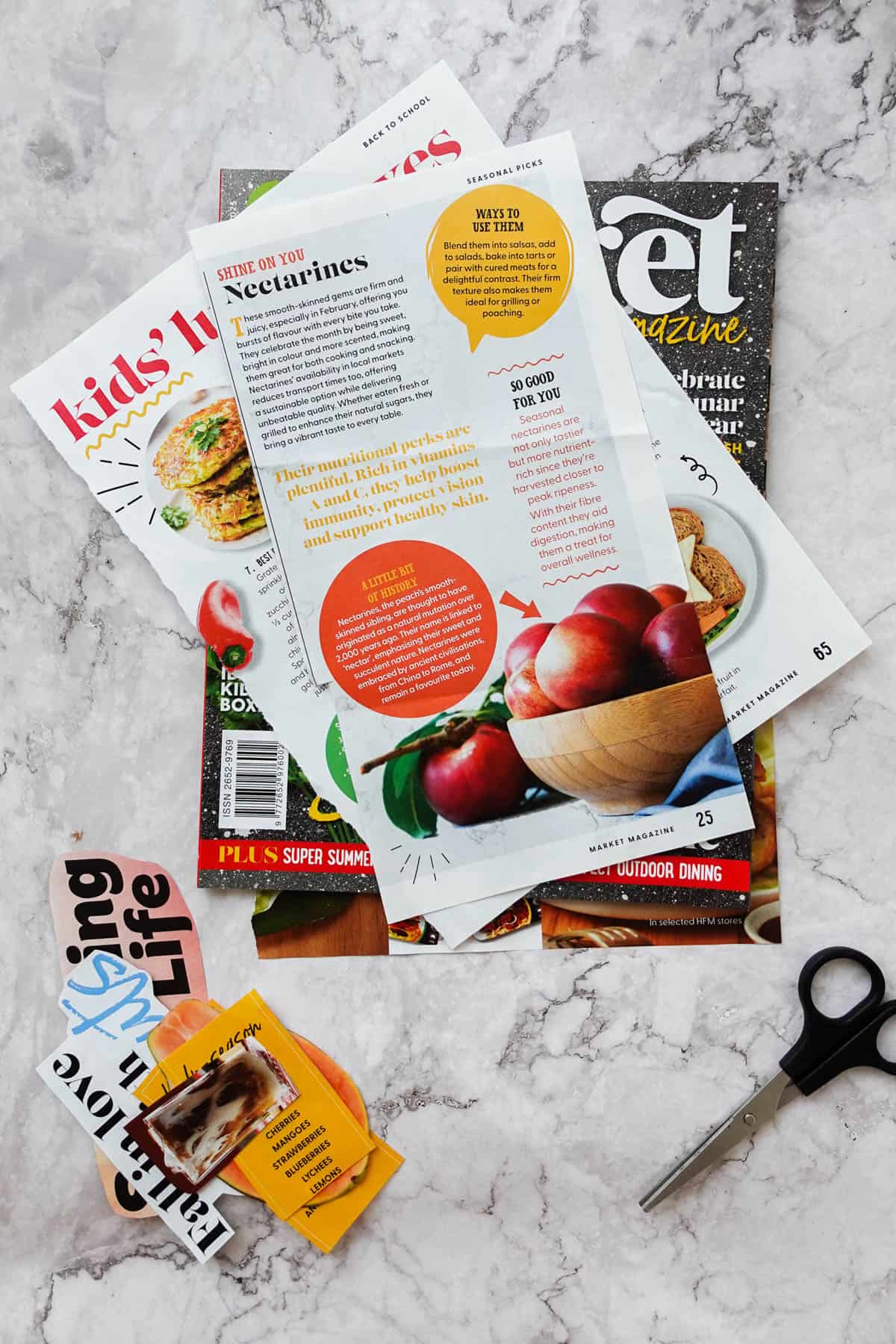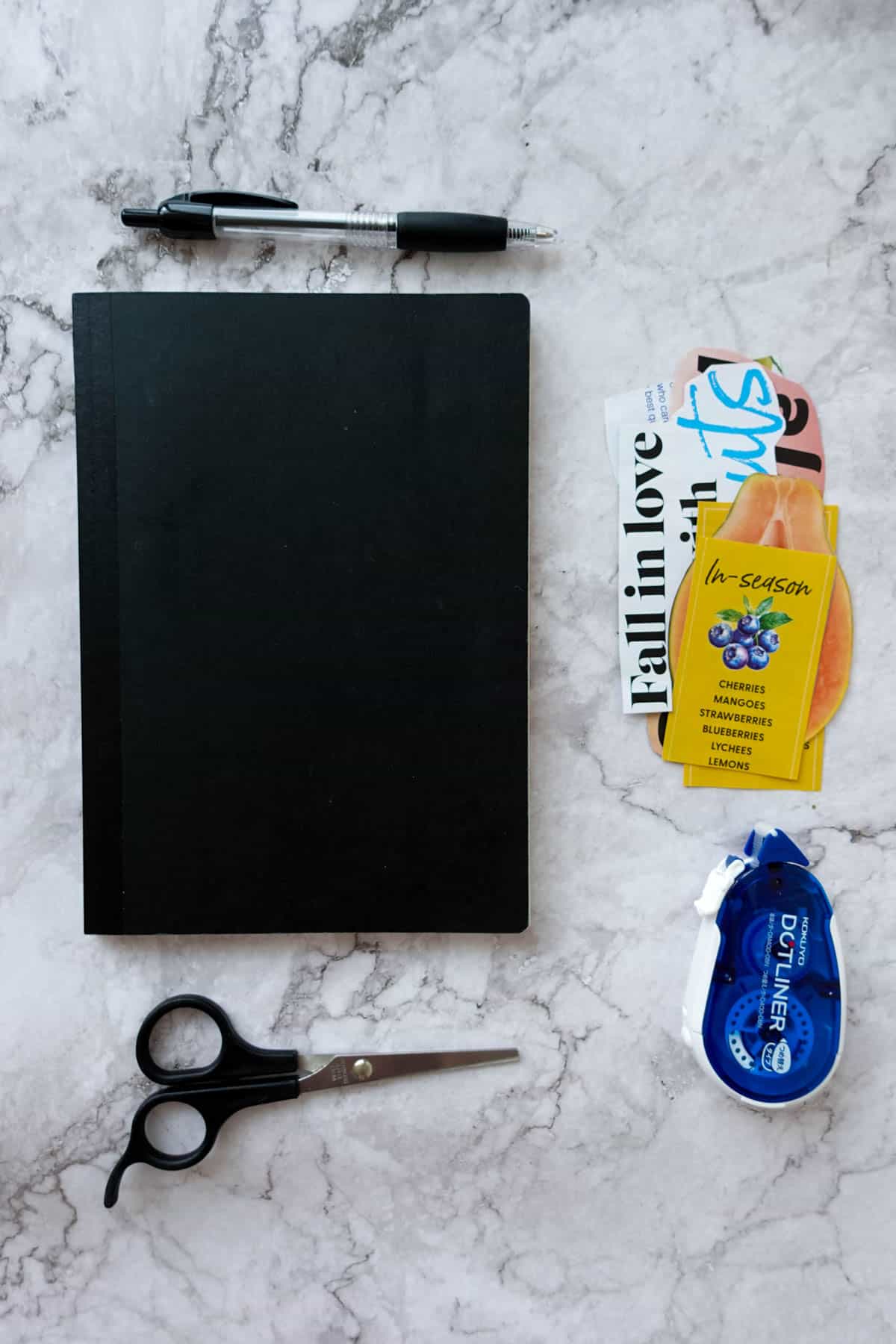If you've ever wondered ‘what is a cooking journal’, this comprehensive guide will walk you through its purpose, how to create one, what to write in it, and key considerations for food journaling.

There’s arguably never been a better time to be a home cook. With unlimited access to recipes, cooking tutorials, and deep dives into ingredients just a Google search away, it’s easier than ever to try new dishes and sharpen your skills without ever stepping foot in culinary school.
But while the internet makes learning to cook accessible, there’s still something magical about documenting your cooking journey in a physical notebook. Whether you use a cooking journal to record your favourite recipes, jot down restaurant reviews, or keep track of your kitchen experiments, it can become a deeply personal resource that reflects who you are as a cook.
Over time, your cooking journal can even turn into a cherished heirloom, passed down to family or friends, filled with flavours and memories of meals shared.
Food has always been deeply tied to nostalgia, and a cooking journal is more than just a notebook, it’s a time capsule. Years from now, flipping through your journal’s pages will transport you straight back to the moments, meals, and memories that shaped your love for food.
Why start one?

There are plenty of reasons to start a cooking journal, from documenting your culinary journey to creating a personalised recipe archive.
Save your favourite recipes
A cooking journal is the perfect place to keep track of beloved recipes — whether they’re family heirlooms, handwritten notes, or new recipes you’re experimenting with. Turn your blank recipe journal into a personal recipe index by pasting in printed recipe pages, jotting down ingredient lists, and collecting recipe cutouts so you always have your favourites in one place.
Commemorate restaurant experiences
Another great use for a cooking journal is reviewing restaurants. Keep a record of the places you visit, what you ordered, and what stood out. You can even sketch your plate, note menu highlights, or rate your experience for future reference.
Create a memento for friends & family
If you know someone who loves cooking, a homemade cooking journal makes a thoughtful gift. Fill it with recipes you know they’d love, family favourites, cooking tips, and even a few handwritten quotes or poems about food. Don’t forget to leave a few blank pages so they can add their own notes!
A creative outlet
Instead of mindlessly scrolling social media at the end of the day, why not try journaling? Not only is it a great way to document your cooking, but keeping a cooking notebook is also a fun, low-effort creative outlet — perfect for doodling, reflecting, and memorialising food experiences.
The basics: what you’ll need

The beauty of a cooking journal is that you can make it your own. No fancy stationery required! Just a blank notebook and your imagination.
Blank notebook
Choose a format that suits your style. If you love drawing or scrapbooking, opt for unruled pages. If you prefer structure, lined paper, grid paper, or a bullet journal might be a better fit.
Protective cover or plastic sleeves
Since you’ll likely be using your journal in the kitchen, plastic sleeves or a cover can help protect it from spills and stains. There are many affordable options that fit standard notebook sizes and will keep your journal in good shape for years to come.
Pens & pencils
The right writing tools can make journaling even more enjoyable. Test a few pens to see which ones write smoothly without bleeding through the pages. Don’t worry if ink smudges or your handwriting isn’t perfect — that just adds to the charm!
Recipes
Start by gathering a few favourite recipes to include. Whether you’re copying family recipes from memory, scanning favourites from cookbooks, or writing down kitchen experiments, this will be the heart of your journal.
Photos, cutouts & keepsakes

Enhance your cooking journal with personal touches like magazine cutouts, restaurant coasters, business cards, and postcards. Highlight favourite cafés on a map, paste in photos of memorable meals, or clip food images from grocery store flyers to bring your journal to life.
Adhesives
If you're planning to add photos or recipe clippings, you'll need glue sticks, double-sided tape, or dot liners to secure them in place.
How to make it

There’s no 'best way' to create a cooking journal. Think about what you’d like to document and tailor your journal to reflect your personal preferences. Whether you want to fill it with hand-drawn recipe illustrations, meal prep ideas, or restaurant reviews, the beauty of a cooking journal is that it’s uniquely yours.
Getting started
- Cut out food photos and phrases from magazines
- Make copies of pages from your favourite cookbook/recipe book
- Collect handwritten recipes from family members
- Save menus, business cards, and coasters from restaurants you visit
- Write down quotes from your famous chefs
- Create themed pages (e.g., 'Cosy Fall Dinners' or 'Desserts to Try')
What to write in your journal
As you start filling your cooking journal, you might wonder what else to write beyond recipes. Here are some ideas to make your entries more meaningful:
- List restaurants you visit and your top dishes from each
- Write out go-to easy meals (for quick dinner inspiration!)
- Dedicate pages to specific ingredients (fun facts, personal notes, or ways you’ve used them)
- Keep a dinner diary (catalogue what you made, how it turned out, and any tweaks for next time)
- Transcribe recipes from beloved cookbooks and add your own modifications
- Plan special occasion menus (holidays, birthdays, family gatherings)
Final thoughts
A cooking journal is more than just a place to store recipes, it’s a reflection of your culinary journey, a creative outlet, and a sentimental keepsake all in one. Whether you use it to track restaurant experiences, jot down meal ideas, or create a family heirloom, the most important thing is to make it yours.
So grab a notebook, start writing, and let your cooking journal become a treasured piece of your food story.